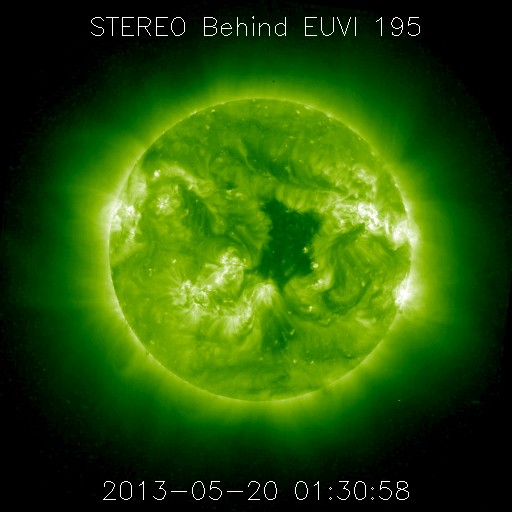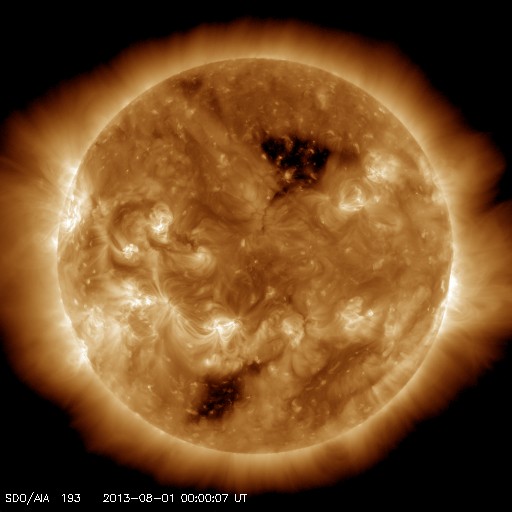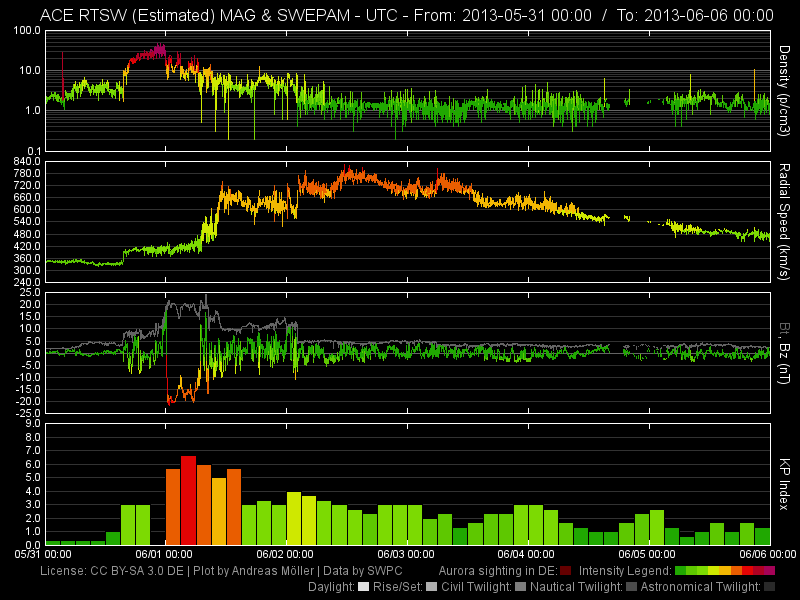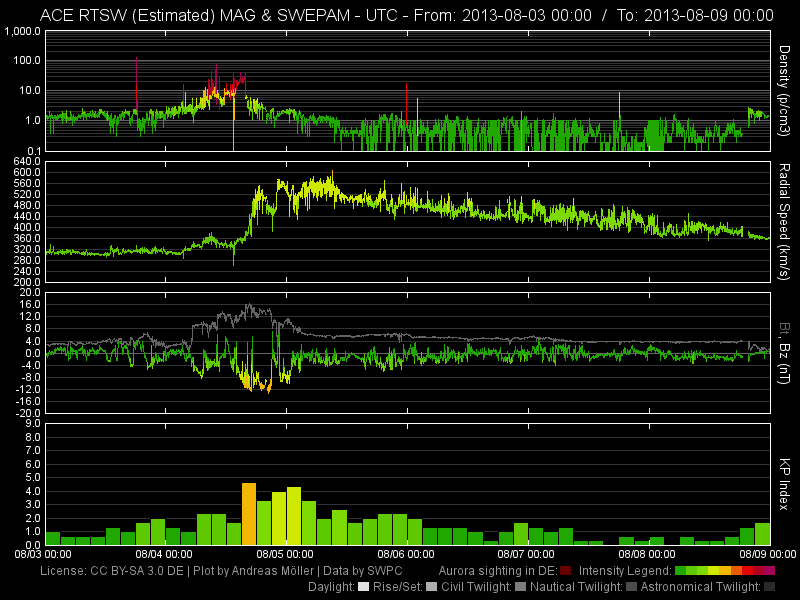Coronal Holes
Coronal holes (often abbreviated as CH) are areas on the sun's surface from which plasma escapes at high speed. They are cooler than the rest of the sun's surface and have lower pressure. The magnetic field lines around a coronal hole are not closed but extend into space. Thus, plasma can flow into space unimpeded and quickly. When the solar wind from a CH hits the Earth, it can produce bright auroras.
Unlike sunspots, coronal holes are longer-lasting and typically persist through several solar rotations.
Coronal holes are identified by dark areas on the sun's surface in X-ray images from observation satellites. (See image above) The rule is: The larger and more Earth-directed the CH is, the stronger the effects on Earth and the more likely the chance of auroras. The arrival of solar wind from a CH, like with flares or filament eruptions, does not occur abruptly, but the values at the ACE satellite build up slowly.
The effects of a coronal hole are identified by a characteristic CH signature on the graphs of the ACE satellite:
- First, the particle density rises to a maximum.
- Shortly after, the IMF begins to change. Bx, By, and Bz increase.
- The particle density decreases and the magnetic disturbance calms down.
- While particle density and the strength of the IMF decrease, the solar wind speed increases over several days and then slowly declines.
In the years 2015 and 2016, continuous observation by AKM e.V. demonstrated that coronal holes also regularly lead to aurora detections in Germany. However, the geomagnetic storms tend to be moderate, so the aurora is usually only detectable photographically or in the far north of Germany.



